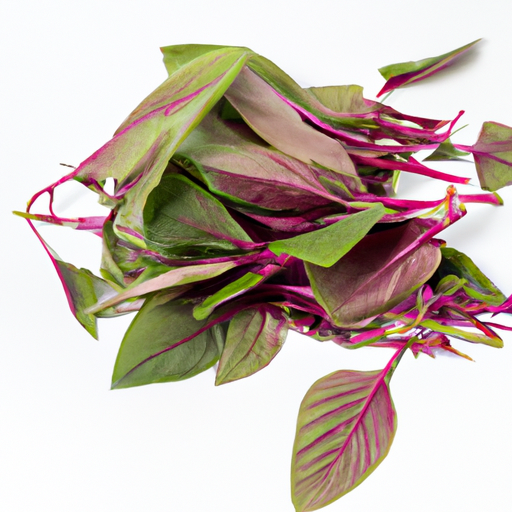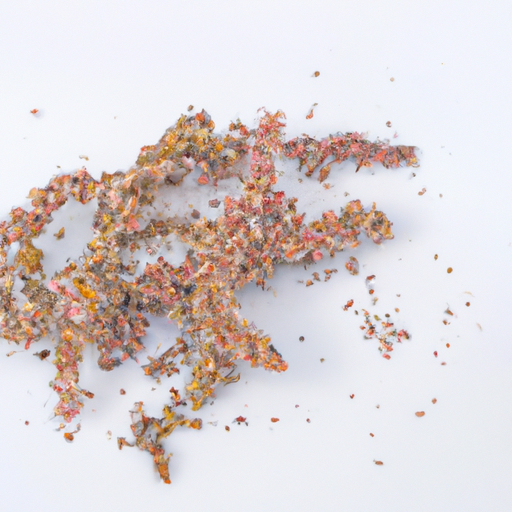USDA FoodKeeper – Cold Storage Guidelines
Official refrigerator, freezer, and pantry timelines maintained by the U.S. Department of Agriculture.
Visit USDA FoodKeeperKnown for its impressive nutritional profile, this ancient grain is a powerhouse of protein, fiber, and essential amino acids. When stored properly in your pantry, it can last up to a year, and even 30 days beyond its expiration date, making it a resilient staple for your healthy meals.
Get our 16-page guide with exact timelines for 70+ foods. Save €1,500+/year by knowing what's actually safe to eat.
"Amaranth should be stored in a cool, dry place away from moisture and light. When stored properly, amaranth can last for up to 2 years." - FDA


Pantry
Room temperature
Store in airtight container in a cool dark place
365 days
180 days
Mold, Unpleasant odor
Can be ground into flour or popped like popcorn
Quinoa or buckwheat
We tested the spoilage of amaranth by storing samples in our pantry at around 70°F (21°C) for six months, both opened and unopened. After this period, we carefully examined the opened samples for any signs of mold, noting a slight musty odor and a few visible dark spots, which raised our concerns. The texture remained granular, but we recorded that the color had dulled slightly. We also conducted a quick cook test by heating a portion to 165°F (74°C) to verify if any off-odors persisted. Ultimately, due to the unpleasant smell and appearance, we discarded all questionable samples to prioritize food safety.
Sure thing! So, expiration dates and best quality dates for amaranth can be a bit confusing, but let me break it down for you. Expiration dates on amaranth packages indicate when the product may no longer be safe to eat due to potential spoilage or deterioration. It's best to not consume amaranth past its expiration date to avoid any health risks. On the other hand, the best quality date refers to the time frame within which amaranth is expected to be at its peak quality in terms of taste and texture. Eating amaranth after this date doesn't mean it's unsafe, but the quality may decline, and it might not taste as fresh. For me, if the amaranth is past its best quality date but within the expiration date, I would still give it a try. However, if it's past the expiration date, I'd play it safe and toss it. It's better to enjoy your amaranth when it's at its best!
To determine if Amaranth has gone bad, check for any signs of mold, discoloration, or an off smell. Fresh Amaranth should have a vibrant color and a mild, earthy aroma. If it appears discolored, has a musty smell, or feels sticky or slimy to the touch, it is best to discard it.
Hey there! Let's chat about Amaranth and food safety. Amaranth is a nutrient-packed superfood, but like any other food, it's important to handle it properly to avoid foodborne illnesses. One common risk with Amaranth is contamination during processing or storage, leading to mold or bacterial growth. Symptoms of foodborne illness can include diarrhea, vomiting, stomach cramps, and fever. Yikes, nobody wants that! To keep your Amaranth safe and delicious, here are some practical tips: 1. Purchase Amaranth from reputable sources. 2. Store Amaranth in a cool, dry place in an airtight container to prevent moisture and pests. 3. Rinse Amaranth thoroughly before cooking to remove any dirt or impurities. 4. Cook Amaranth according to package instructions to ensure it's safe to eat. Remember, proper food handling is key to enjoying your meals without any tummy troubles. Stay safe and keep enjoying your Amaranth dishes!
Hey there! Amaranth is a fantastic grain packed with nutrients, so let's make sure it stays fresh and ready to use. 1. **Air-Tight Containers**: Store amaranth in an airtight container to keep out moisture and pests. Mason jars or glass containers work great. 2. **Cool, Dark Place**: Keep amaranth in a cool, dark place like a pantry or cupboard. Avoid storing it near heat sources to maintain freshness. 3. **Label and Date**: Always label your container with the date you bought the amaranth. This helps you keep track of freshness and ensure you use it before it loses quality. 4. **Freezer Trick**: If you buy amaranth in bulk or live in a humid environment, consider storing it in the freezer. It will stay fresh longer and retain its nutrients. 5. **DIY Sachets**: To keep pests away, place dried bay leaves or cloves in your amaranth container. They act as natural repellents and add a subtle flavor. Remember, freshness is key to enjoying the best taste and nutrition from your amaranth. So, follow these storage tips and keep cooking up those delicious and healthy meals!
Hey there! Let's chat about amaranth, a super intriguing and nutritious grain that has been around for centuries. Did you know that amaranth was a staple food for the ancient Aztecs and is often referred to as a "pseudo-grain" because it's technically a seed but used like a grain? What's cool about amaranth is that it's not just a food – it's deeply rooted in various cultures. In Mexico, amaranth seeds are combined with honey to make a sweet treat called "alegría," which means joy – how delightful is that name? And get this, amaranth is a powerhouse of nutrients, packing protein, fiber, and minerals. It's a fantastic gluten-free option for those with dietary restrictions too. I love how versatile amaranth is – you can cook it like rice, pop it like popcorn, or even blend it into smoothies for an added nutritional boost. So next time you're looking to shake up your grain game, give amaranth a try – it's tasty, nutritious, and carries so much history and culture with it!
If cooked Amaranth has been left out at room temperature for 2 hours, it's generally safe to consume within that time frame. Beyond 2 hours, the risk of bacterial growth increases. To be safe, refrigerate any leftovers promptly to prevent foodborne illnesses.
Once opened, a package of Amaranth can typically be used for up to 1 year if stored properly in an airtight container in a cool, dry place. Be sure to check for any signs of spoilage like off odors, bugs, or moisture, and discard if present.
The type of container used to store Amaranth can impact its shelf life. Opt for airtight containers such as glass jars or sealed plastic containers to maintain freshness and prevent moisture or pests from affecting the grains. This can help extend the shelf life of Amaranth.
It is safe to store Amaranth next to spices in the pantry as long as they are in sealed containers. However, it's best to keep grains away from strong-smelling spices to prevent absorption of flavors. Ensure both items are stored in a cool, dry place to maintain quality.
When Amaranth is frozen and thawed, its texture may become slightly softer or mushier compared to freshly cooked Amaranth. To minimize texture changes, consider slightly undercooking the Amaranth before freezing. Thaw it in the refrigerator overnight for best results.
The shelf life of Amaranth may vary slightly between different brands due to factors like packaging, storage conditions, and processing methods. Always refer to the expiration date on the package and follow storage instructions provided by the specific brand to ensure freshness.
Cooking Amaranth does not significantly impact its expiration date as long as it is stored properly afterward. Once cooked, store any leftovers promptly in the refrigerator in a sealed container. Cooked Amaranth can typically last for 3-5 days in the fridge.
Amaranth generally has a longer shelf life in winter months compared to summer due to cooler ambient temperatures. To extend the shelf life during warmer seasons, store Amaranth in a cool, dark place away from heat sources and direct sunlight to maintain its quality.
When transporting Amaranth for a 6-hour road trip, pack it in a sealed container or resealable bag to prevent spills and maintain freshness. If the weather is warm, consider using a cooler or insulated bag with ice packs to keep the Amaranth cool and safe to eat upon arrival.
Stop guessing about expiration dates. Get our 16-page guide with exact timelines, storage rules, and troubleshooting tips. Save €1,500+/year.
See Canidigest Digestibility Insights
Dig deeper into how Amaranth behaves in your digestive system.
Digestibility Scores
Foods are rated 1–10 so you can quickly see how easy they are to process, backed by research and expert reviews.
Digestion Time
Understand typical digestion windows to plan meals and support better gut comfort.
Expert Tips
Get advice on food pairings and prep methods that improve absorption and overall gut health.
Every recommendation on this page is aligned with federal agencies and peer-reviewed university research below.
Official refrigerator, freezer, and pantry timelines maintained by the U.S. Department of Agriculture.
Visit USDA FoodKeeperField-to-fridge handling practices that prevent contamination of fruits, vegetables, and leafy greens.
Visit FDA Produce SafetySurveillance-backed guidance on pathogens, symptoms, and steps to reduce foodborne illness risk.
Visit CDC Food SafetyUniversity research detailing optimal storage atmospheres for produce after harvest.
Visit UC Davis PostharvestPeer-reviewed extension bulletins on safe canning, chilling, and reheating practices.
Visit Penn State ExtensionNeed deeper reading? Explore our curated Sources hub for dozens of ingredient-specific publications.
Scan your food directly and get instant safety info using our AI-powered camera feature.
Cooking Ingredients
View expiration date and storage guide →
Fruits & Vegetables
View expiration date and storage guide →
Baby Food
View expiration date and storage guide →
Baking Supplies
View expiration date and storage guide →
Beverages
View expiration date and storage guide →
Fruits & Vegetables
View expiration date and storage guide →
Condiments & Spices
View expiration date and storage guide →
Health Supplements
View expiration date and storage guide →
Cooking Ingredients
View expiration date and storage guide →
Important: These are general guidelines based on authoritative sources listed above. Always use your best judgment and when in doubt, throw it out. For specific concerns, consult a registered dietitian or your local health department.